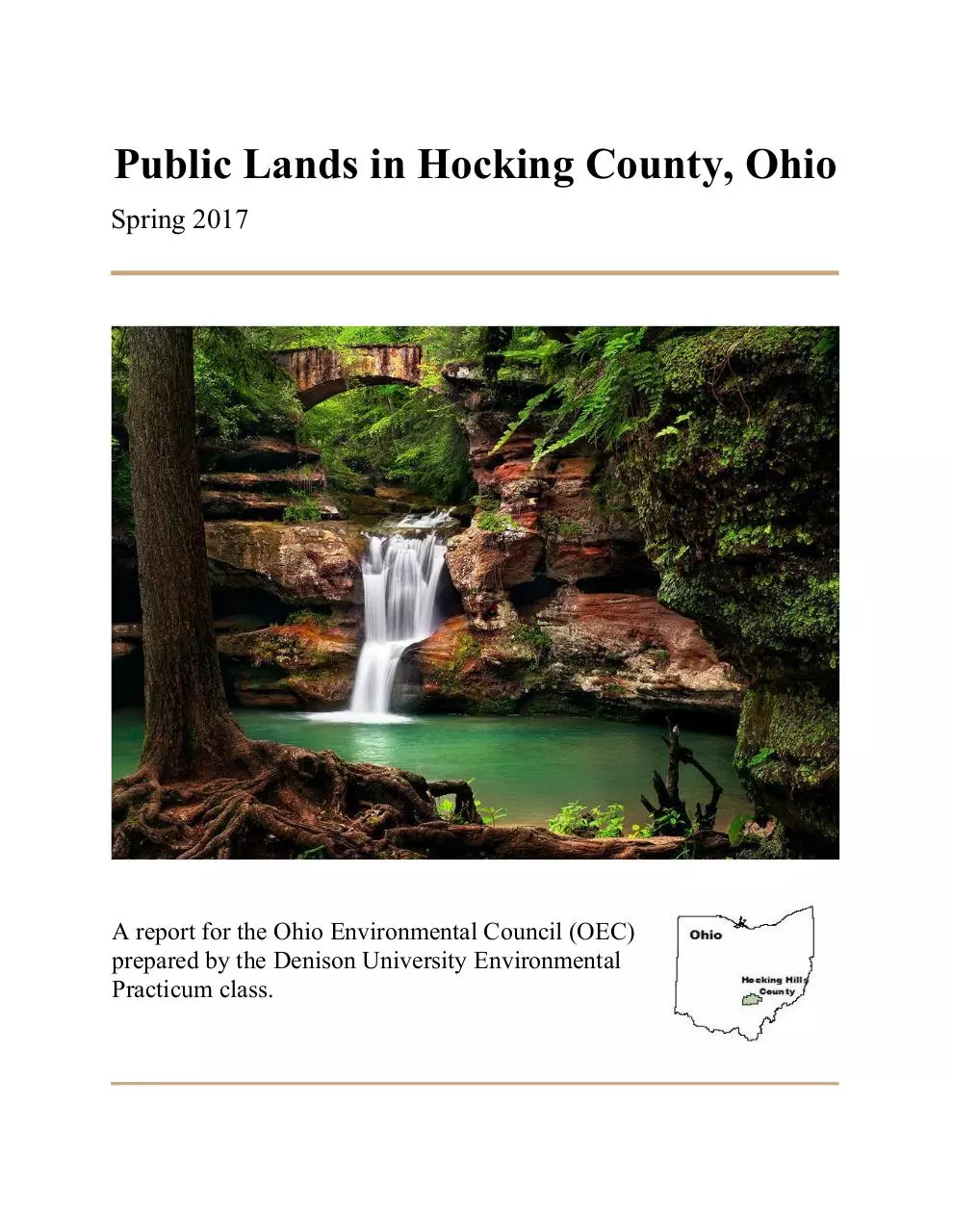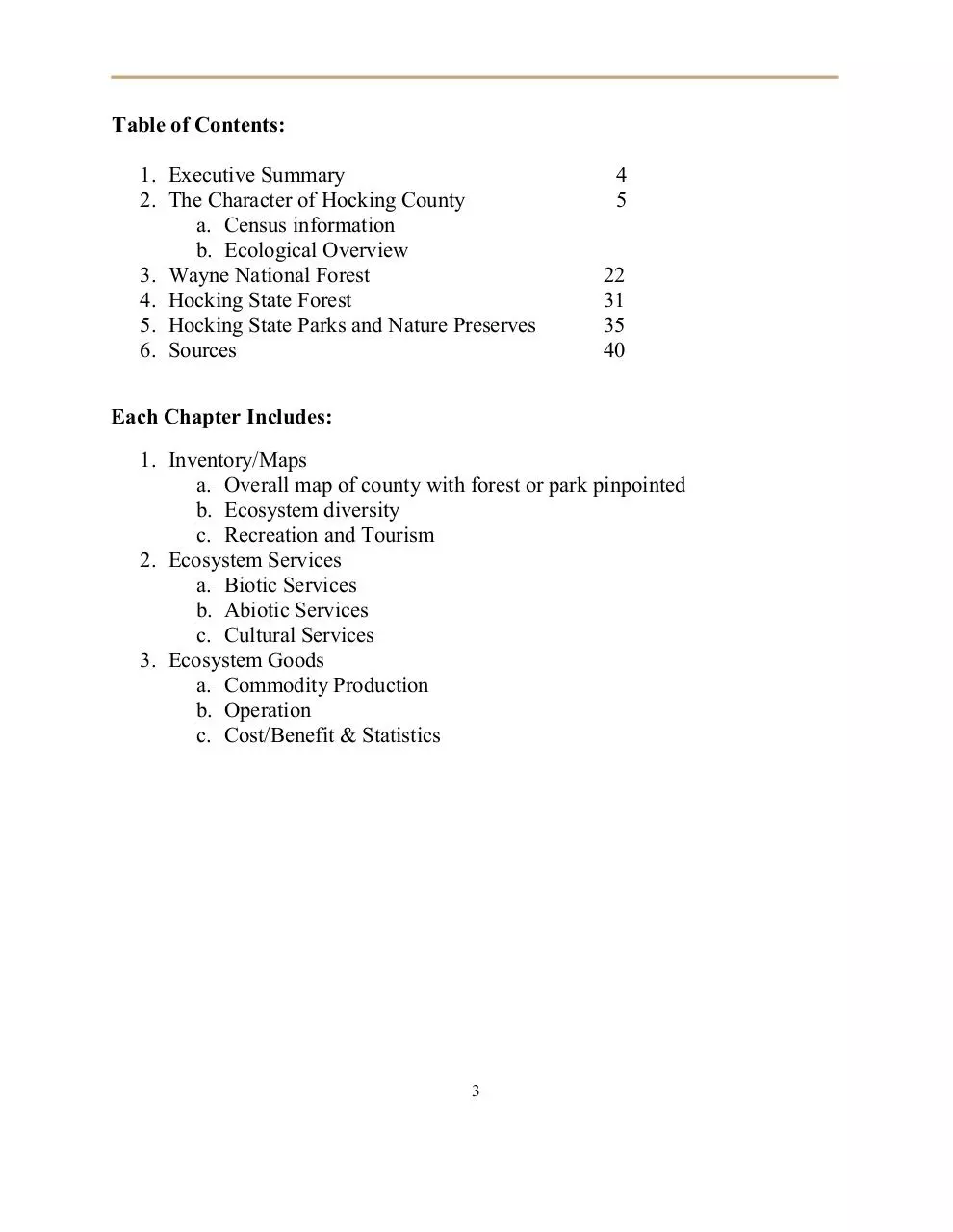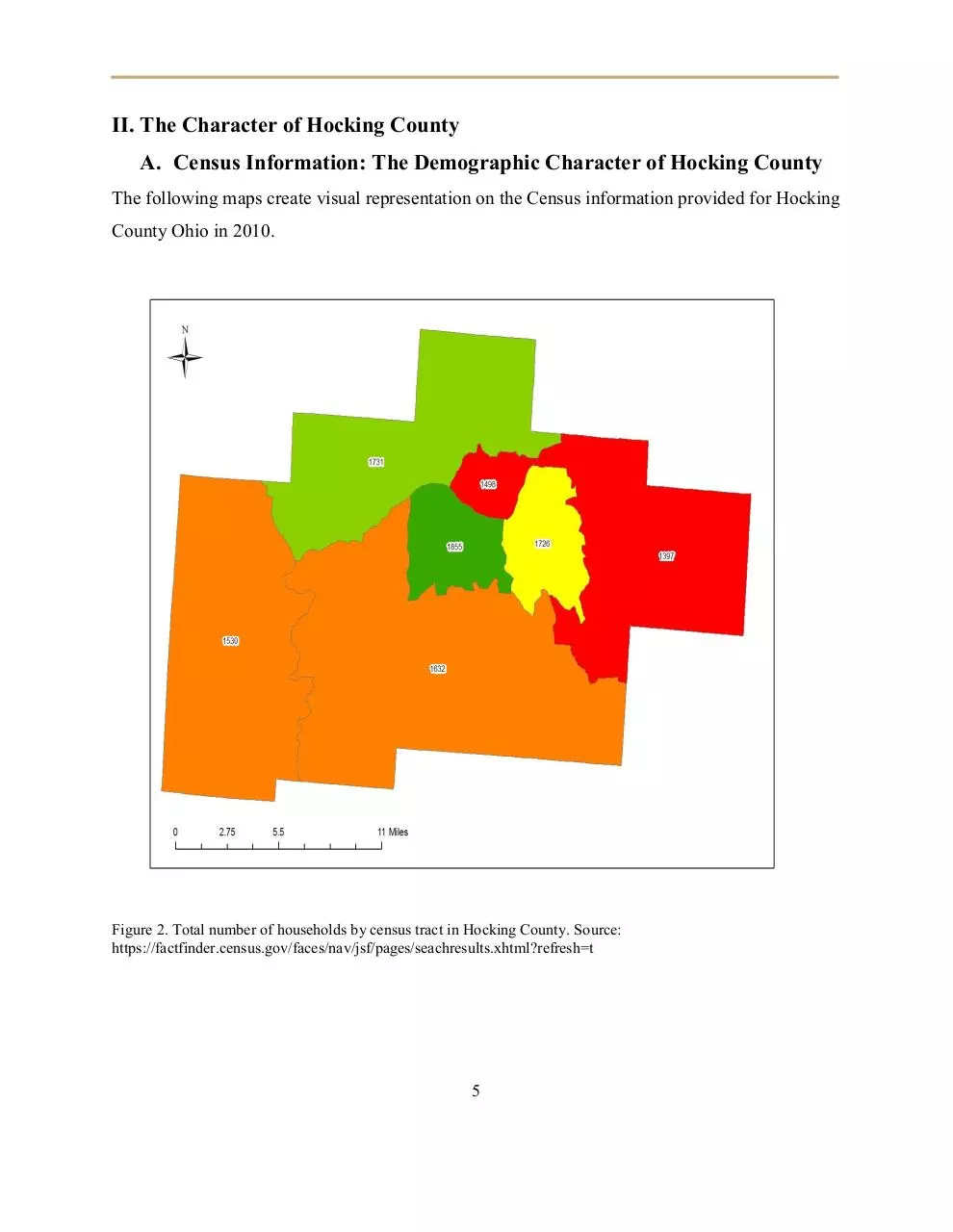ENVSFINALDRAFTapril (PDF)
File information
Title: ENVSFINALDRAFTapril.pdf
This PDF 1.3 document has been generated by Preview / Mac OS X 10.11.6 Quartz PDFContext, and has been sent on pdf-archive.com on 25/04/2017 at 16:20, from IP address 140.141.x.x.
The current document download page has been viewed 410 times.
File size: 3.7 MB (42 pages).
Privacy: public file





File preview
Public Lands in Hocking County, Ohio
Spring 2017
A report for the Ohio Environmental Council (OEC)
prepared by the Denison University Environmental
Practicum class.
Contributors:
Wayne National
Forest
Joseph Dioguardi
Anandita Gupta
Ashley Lowe
Hocking State Parks
& Nature Preserves
Tanzen Angert
Rayna Kingston
Lea Morris
Hocking State
Forest
Aidan Eells
Megan Storms
Sidney Uttam
Overview:
Nine Environmental Studies students collaborated with the Ohio
Environmental Council (OEC) to evaluate public land issues in Hocking
County, OH. Wayne National Forest, Hocking County State Forest, and
Hocking County State Parks and Nature Preserves are the four areas of interest
in this inventory report.
Figure 1. Public land holdings in Hocking Hills as of 2016. Data collected from Hocking Hills Mapping
and Drafting Department.
2
Table of Contents:
1. Executive Summary
2. The Character of Hocking County
a. Census information
b. Ecological Overview
3. Wayne National Forest
4. Hocking State Forest
5. Hocking State Parks and Nature Preserves
6. Sources
4
5
22
31
35
40
Each Chapter Includes:
1. Inventory/Maps
a. Overall map of county with forest or park pinpointed
b. Ecosystem diversity
c. Recreation and Tourism
2. Ecosystem Services
a. Biotic Services
b. Abiotic Services
c. Cultural Services
3. Ecosystem Goods
a. Commodity Production
b. Operation
c. Cost/Benefit & Statistics
3
I. Executive Summary:
The beginning of this report describes the character of Hocking County at large. Census
information, general demographics of the region, endangered species and ecosystem goods that
are common throughout the county are explored in depth. The purpose of this section of the report
is to present commonalities amongst Wayne National Forest, Hocking State Forest and Hocking
State Parks and Preserves prior to analysis of each area specifically.
The following three chapters provide an analysis of Wayne National Forest, Hocking State
Forest and Hocking State Parks and Preserves. Recreational opportunities, including: hiking,
hunting, and fishing are noted and discussed. Ecosystem services, cultural services, and an indepth cost benefit analysis follow. Each chapter also discusses stressors on the land including oil
and gas extraction as well as clear cutting and or logging efforts.
The purpose of this report is to bring to light the multiple different services Ohio’s public
lands offer. This report attempts to highlight the economic and ecosystem benefits these public
lands offer to the community. Economic and ecosystem benefits are not always related to one
another, but this report shows how the two services can combine and be dependent on one another
and positively influence the environment.
The Ohio Environmental Council will benefit from this report internally and externally.
Not only will this report be useful to the staff at the OEC, but this report is also a tangible resource
for the OEC to give to the public to educate individuals about the status of public lands in Hocking
County. Overall, this report is important because public lands are of high importance in regards to
protecting old growth forests, endangered species and key resources like gas and oil. This report
highlights the key resources and stressors in the Wayne National Forest, Hocking State Forest and
Hocking State Parks and Nature Preserves.
4
II. The Character of Hocking County
A. Census Information: The Demographic Character of Hocking County
The following maps create visual representation on the Census information provided for Hocking
County Ohio in 2010.
Figure 2. Total number of households by census tract in Hocking County. Source:
https://factfinder.census.gov/faces/nav/jsf/pages/seachresults.xhtml?refresh=t
5
Figure 3. Number of individuals (male and female) by census tract in Hocking County. Source:
https://factfinder.census.gov/faces/nav/jsf/pages/seachresults.xhtml?refresh=t
6
Figure 4. Number of males by census tract in Hocking County. Source:
https://factfinder.census.gov/faces/nav/jsf/pages/seachresults.xhtml?refresh=t
7
Figure 5. Number of females by census tract in Hocking County. Source:
https://factfinder.census.gov/faces/nav/jsf/pages/seachresults.xhtml?refresh=t
8
Figure 6. Percent of census tract population that falls into low to moderate income bracket for the area. Low to
moderate income bracket based upon individuals or families whose household income does not exceed 115 percent
of the median income for the area when adjusted for family size. Source:
https://hudgov.prod.parature.com/link/portal/57345/57355/Article/4684/How-is-a-Low-to-Moderate-Incomeindividual-or-family-defined
9
Download ENVSFINALDRAFTapril
ENVSFINALDRAFTapril.pdf (PDF, 3.7 MB)
Download PDF
Share this file on social networks
Link to this page
Permanent link
Use the permanent link to the download page to share your document on Facebook, Twitter, LinkedIn, or directly with a contact by e-Mail, Messenger, Whatsapp, Line..
Short link
Use the short link to share your document on Twitter or by text message (SMS)
HTML Code
Copy the following HTML code to share your document on a Website or Blog
QR Code to this page

This file has been shared publicly by a user of PDF Archive.
Document ID: 0000588370.